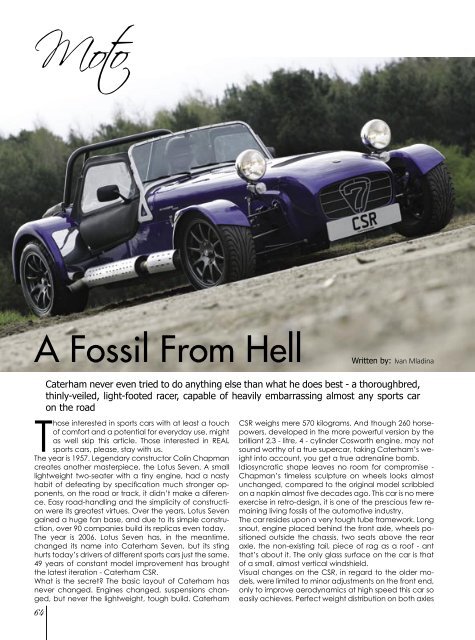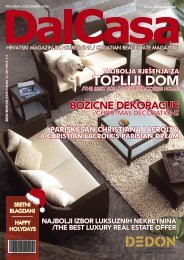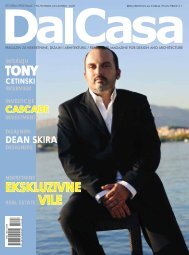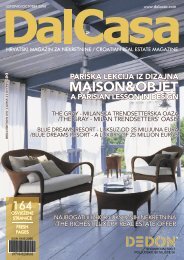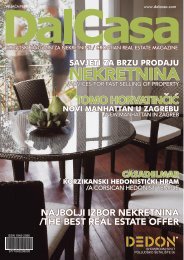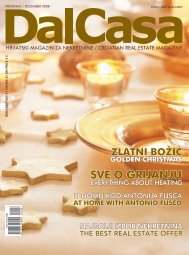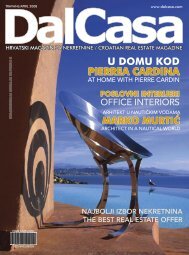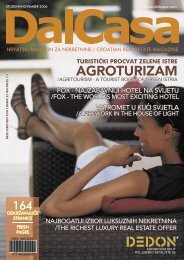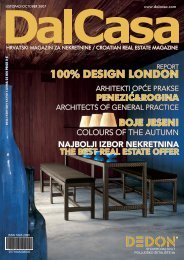BUSINESS ARCHITECTURE POSLOVNA ARHITEKTURA - DalCasa
BUSINESS ARCHITECTURE POSLOVNA ARHITEKTURA - DalCasa
BUSINESS ARCHITECTURE POSLOVNA ARHITEKTURA - DalCasa
Create successful ePaper yourself
Turn your PDF publications into a flip-book with our unique Google optimized e-Paper software.
MotoA Fossil From HellWritten by: Ivan MladinaCaterham never even tried to do anything else than what he does best - a thoroughbred,thinly-veiled, light-footed racer, capable of heavily embarrassing almost any sports caron the roadThose interested in sports cars with at least a touchof comfort and a potential for everyday use, mightas well skip this article. Those interested in REALsports cars, please, stay with us.The year is 1957. Legendary constructor Colin Chapmancreates another masterpiece, the Lotus Seven. A smalllightweight two-seater with a tiny engine, had a nastyhabit of defeating by specification much stronger opponents,on the road or track, it didn’t make a diference.Easy road-handling and the simplicity of constructionwere its greatest virtues. Over the years, Lotus Sevengained a huge fan base, and due to its simple construction,over 90 companies build its replicas even today.The year is 2006. Lotus Seven has, in the meantime,changed its name into Caterham Seven, but its stinghurts today’s drivers of different sports cars just the same.49 years of constant model improvement has broughtthe latest iteration - Caterham CSR.What is the secret? The basic layout of Caterham hasnever changed. Engines changed, suspensions changed,but never the lightweight, tough build. Caterham64CSR weighs mere 570 kilograms. And though 260 horsepowers,developed in the more powerful version by thebrilliant 2,3 - litre, 4 - cylinder Cosworth engine, may notsound worthy of a true supercar, taking Caterham’s weightinto account, you get a true adrenaline bomb.Idiosyncratic shape leaves no room for compromise -Chapman’s timeless sculpture on wheels looks almostunchanged, compared to the original model scribbledon a napkin almost five decades ago. This car is no mereexercise in retro-design, it is one of the prescious few remainingliving fossils of the automotive industry.The car resides upon a very tough tube framework. Longsnout, engine placed behind the front axle, wheels positionedoutside the chassis, two seats above the rearaxle, the non-existing tail, piece of rag as a roof - antthat’s about it. The only glass surface on the car is thatof a small, almost vertical windshield.Visual changes on the CSR, in regard to the older models,were limited to minor adjustments on the front end,only to improve aerodynamics at high speed this car soeasily achieves. Perfect weight distribution on both axles


